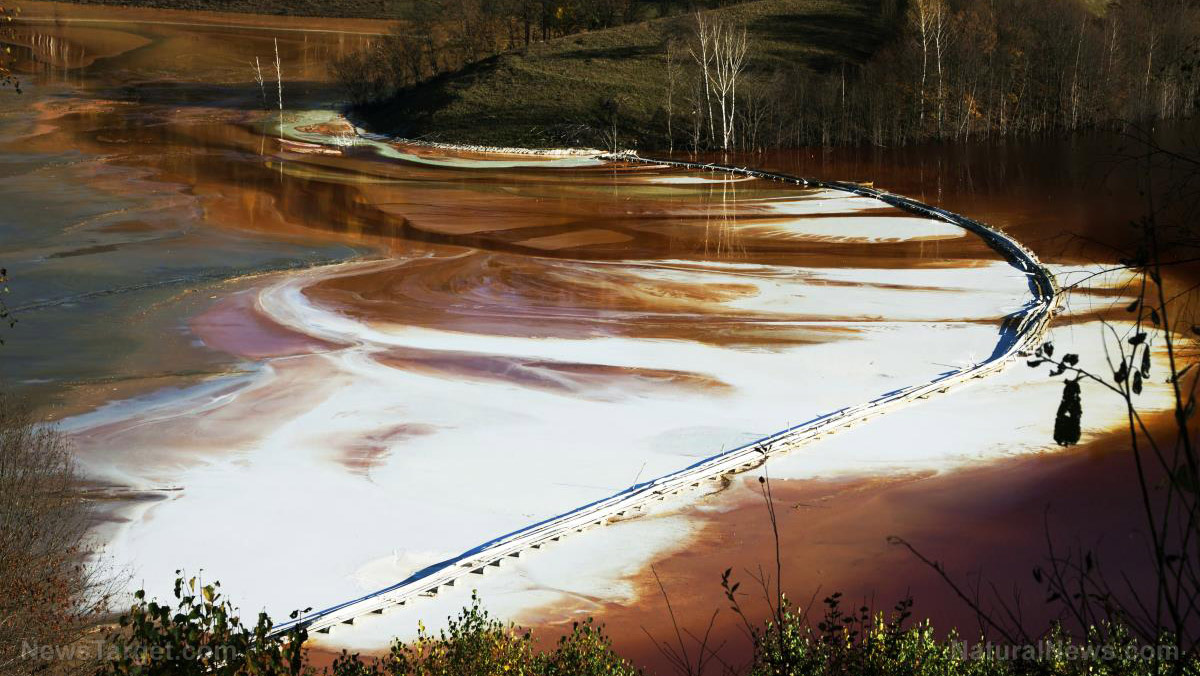
Perfluorooctane sulfonate (PFOS) and perfluorooctanoic acid (PFOA) have been detected in the local water supplies. Found in firefighting foam, these two perfluorinated chemicals have been under investigation by the military for years.
Water samples were taken from public drinking water sources outside of Joint Base Cape Cod in August 2017. The recently-released analysis showed unsafe levels of PFOS and PFOA in two of the nine potable water sources.
Off-based private wells were also affected by the contamination. Samples were taken from 73 such water sources. The PFOS and PFOA levels in 22 of them exceeded the EPA's recommended safe level of 70 parts per trillion (ppt).
The contamination is not just limited to drinking water. Groundwater samples were also taken from 26 areas outside the base. Thirteen of the samples exceeded the EPA advisory level. (Related: Now Detroit is dealing with toxic chemicals in the drinking water.)
Cancer-causing chemicals from firefighting foam now in Cape Cod's only aquifer
The federal agency classified PFOS and PFOA as "contaminants of emerging concern." The EPA has not yet issued an official maximum level for either of them.
Numerous health problems have been linked to the perfluorinated compounds. Both chemicals are reported to delay the development of fetuses and children, alter liver enzymes and the immune system, raise cholesterol and uric acid levels, and cause kidney, prostate, and testicular cancer.
Base officials believe the PFOS and PFOA in the 2017 samples came from firefighting foam that was used in the base's training area for firefighting. They might have also come from fuel spills that were doused by firefighting foam as a safety measure.
Joint Base Cape Cod spans 22,000 acres. Beneath it lies an aquifer that is the only source of potable water in Cape Cod.
Military operations in the base have been polluting the local groundwater for decades. Buried ordnance, fuel, and chemical leftovers from training exercises continue to contribute to the contamination.
A federal Superfund program and a separate clean-up effort have been hard at work amending the damage to nearby communities. Together, the two programs have cleaned up one of the 19 identified sources of contamination and have improved several others.
However, Joint Base Cape Cod is still treating 11 million gallons of groundwater every day. And new sources of contamination may appear as the PFOS and PFOA spread through the groundwater.
PFOS and PFOA are spreading throughout Cape Cod drinking water
In 2017, a municipal well in Mashpee Village was closed down due to high levels of fluorinated compounds. Affected residents of a mobile home park received supplies of bottled water.
Their mobile homes were eventually connected to the municipal water system. Base officials are also providing bottled water and filtration systems to Pocasset, whose water supply was tainted by polluted water from the Otis Rotary.
Joint Base Cape Cod has received further funding to deal with this new round of contamination. Its investigators are planning to set up monitoring wells in Mashpee and Falmouth. They will also take samples from private drinking wells in those areas.
Experts believe the perfluorinated compounds will settle deeper into the water as they travel further from the base. Since most private wells do not go past a depth of 20 feet, they might not be drawing up contaminated water.
If a well has been contaminated, the military will shut it down and provide an alternative supply of drinking water.
Find out how to protect your drinking water from perfluorinated chemicals and other toxic compounds at CleanWater.news.
Sources include:
Please contact us for more information.























